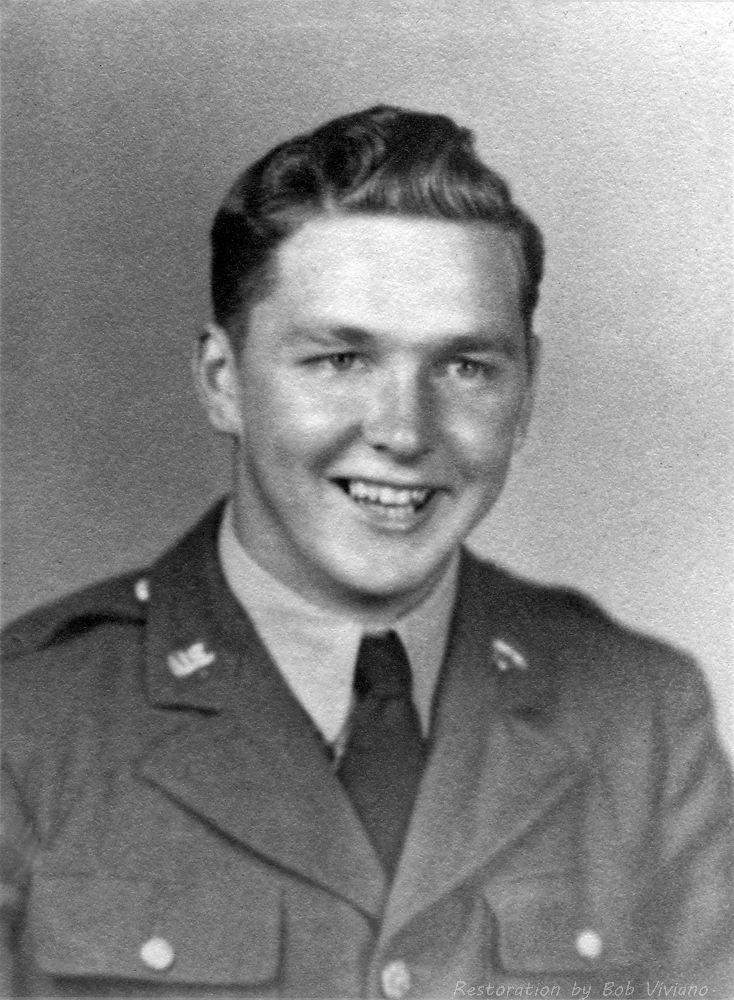William Emil Kero was born on January 20, 1921, in Saxon, Iron County, Wisconsin. He was the son of Emil A Kero and Senja J Kelto Kero.
William entered military service on July 28, 1942, and received paratrooper training at Fort Bragg, NC. He served in Company C, 307th Airborne Engineer Battalion. His first overseas duty was in North Africa. Later, he took part in the invasion of Sicily, returned to Africa, and saw action on the Anzio beachhead. Later, he took part in the invasion of Italy, where he was dropped behind the enemy lines and reported missing for 13 days. After his return to the American lines, he went to England and then to Holland (The Netherlands).
Sgt Kero was Killed in action on September 20, 1944, during Operation Market Garden while participating in the Waal River crossing, the heroic crossing that liberated Nijmegen, The Netherlands. He was one of the 49 paratroopers killed during the assault on German positions on the opposite bank. Sgt Kero is now buried in the Fort Snelling National Cemetery, Minneapolis, Hennepin County, Minnesota, USA.
*************************
DSC Citation
The President of the United States of America, authorized by Act of Congress on July 9, 1918, takes pride in presenting the Distinguished Service Cross (Posthumously) to Sergeant William Emil Kero (ASN: 36603251), United States Army, for extraordinary heroism in connection with military operations against an armed enemy while serving with Company C, 307th Airborne Engineer Battalion, 82d Airborne Division, in action against enemy forces on 20 September 1944. Sergeant Kero, a Squad Leader, crossed the river in the leading boat as a member of a squad to remove mines and facilitate the acquisition of a bridgehead by the infantry. He advanced with the forward assault elements to their bridge objective and became separated from the unit with seven others. Sergeant Kero shot two Germans from the bridge trestle. Two 20-mm. SP guns fired point blank at the group. On his own initiative Sergeant Kero attacked the house sheltering the Germans while a companion set up a light machine gun. Six Germans were killed in the house and three others when they tried to escape. Sergeant Kero took three men on to the embankment to cover the light machine gun and observed nine Germans trying to outflank him 200 yards distant. He opened fire, threw grenades and adjusted direction from a fully exposed location for the light machine gun until most of the enemy detail was killed and the others were in retreat. Sergeant Kero was killed as a result of this action. Throughout three hours of fighting, Sergeant Kero displayed exemplary courage of the highest order, was constantly in the van of each attack and was a source of inspiration to all who fought with him. The superior leadership, personal bravery and courage of Sergeant Kero made a vital contribution to the successful capture of the important bridges, and reflect great credit upon himself, the 82d Airborne Division, and the United States Army.
Source of information: www.findagrave.com

